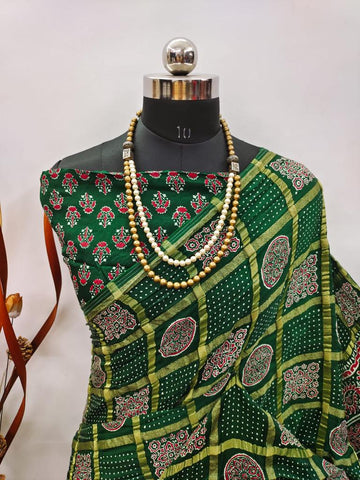The ajrakh creators guarantee that their art traces all the way back to early bygone eras. Pieces of printed sections which were accepted to begin from Western India, were uncovered at Fostat close to Cairo. The ajrak create was rehearsed by the khatri local area, living in the banks of stream Sindh (Indus in present day Pakistan). These families moved to Kutch from Sindh in the sixteenth 100 years, when the Lord of Kutch perceived the art and welcomed them to get comfortable the fruitless uninhabited land, alongside dyers, printers, potters and embroiderers. The dyers were Khatri Brahmins. Two ages later they switched over completely to Islam and got comfortable Dhamadka for its nearness to a stream in which they washed their texture.

Ajrakh makers say that their craft dates back to ancient times. The remains of a printed fragment thought to have come from western India have been found at Fustat near Cairo. Ajrak handicrafts were made by the Khatri community, who lived along the banks of the Sindh River (Indus in modern-day Pakistan). These families migrated from Sindh to Kutch in the 16th century, when the King of Kutch recognized the craft and invited them to settle in the arid and barren land, along with the dyers, the printers, artists and weavers.
But after 400 years of use, in 1989 the river dried up, and the water level of the wells and wells continued to decrease. When a major earthquake hit Kutch in 2001, block printers were forced to move. They settled in Ajrakpur, a town built on the organization of a social NGO. There are more than 100 families living in Ajrakpur and 30 government license printing offices; Almost all the families in Ajrakpur derive their income from Ajrak.
Today, the ajrak tradition is maintained in Kutch, and in Khavda, Dhamadka and Barmer in Rajasthan.
Dharti Bandhani is follows the tradition of ajrakh Printed Saree and they manufacture all kind of ajrakh printed sarees in surat.

